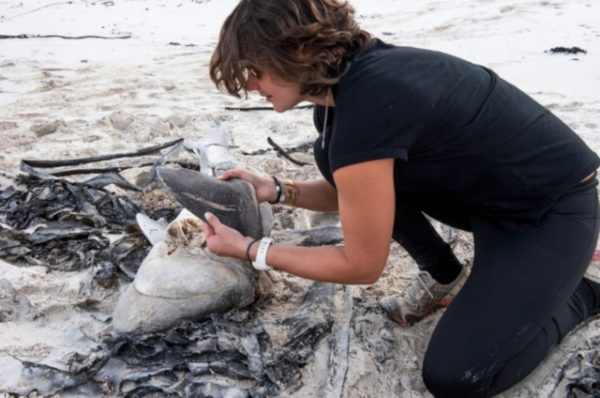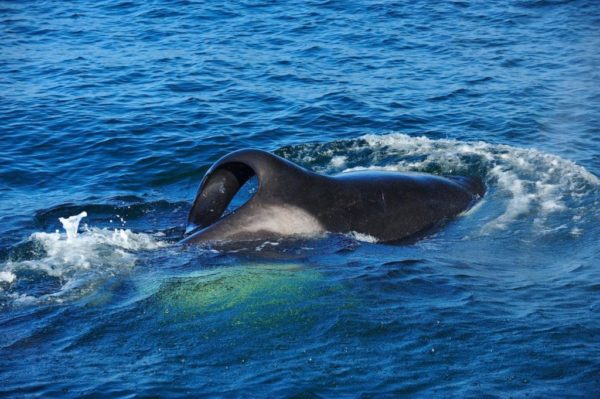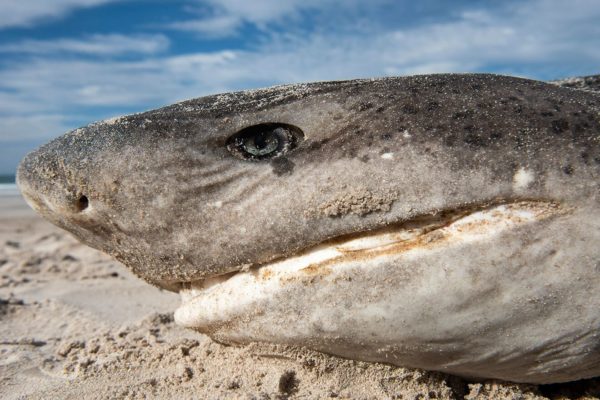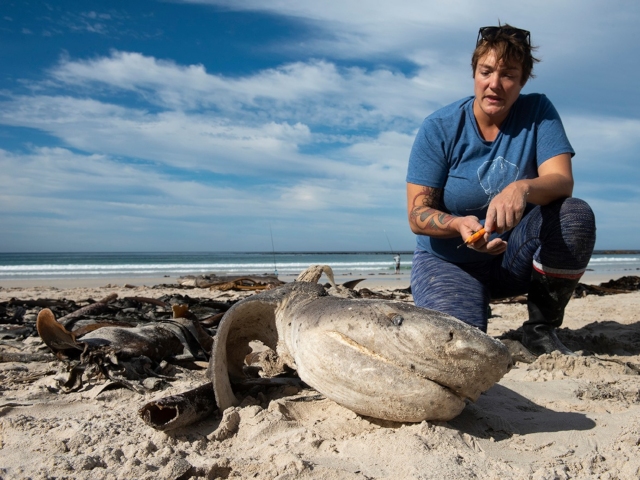Five sevengill sharks were found washed up on a main beach in Betty’s Bay last week, and experts say it looks like the work of two well-known killer whales that have become infamous in the Western Cape.
All of the sharks had seemingly had their throats ripped out with almost surgical precision. Meagen McCord, Director of the South African shark conservancy in Hermanus, says all five were killed in the typical modus operandi of killer whales or orcas.
These cunning predators of the deep typically work in groups to grab a shark’s pectoral fins, flip it over and tug the shark to tear open the throat and chest cavity, where they suck out the liver.
The liver, a rich source of nutrients, is the only part of the shark that killer whales eat.

Oxford called on experts Meaghen McCord and Pippa Ehrlich, who came from Hermanus and Simon’s Town respectively to investigate the scene.
The pair confirmed that the sharks were indeed killed by orcas and upon further investigation were found to be missing their livers.

The two orcas suspected of killing the sharks are linked to a number of great white shark deaths over the years as well as the broadnose sevengill shark graveyard that was discovered in False Bay.
The orcas are reportedly both male and distinguishable by their bent dorsal fins and have been given the names Port and Starboard.

According to a research paper titled Running scared: when predators become prey, which was co-authored by Dr Alison Kock along with Tamlyn M. Engelbrecht and M. Justin O’Riain, the two super-predators are known to specialise in preying on certain species, and up until 2015 were only documented preying on marine mammals within False Bay.
However in recent years, the orca pair have shown serious adaption and changed their preferred diet to shark livers in the area.
“Although selective feeding on shark liver by killer whales is established, this is the first record of killer whale predations on sevengill sharks in False Bay, and the first documentation of a novel feeding technique, in which killer whales used force applied to the pectoral fins of each shark to rupture the pectoral girdle and thereby access the liver,” says the paper.
Also read:
Killer whales spotted in Simon’s Town
Shark-eating killer whales move into Cape Town
Pictures: Safari App/Pete Oxford

